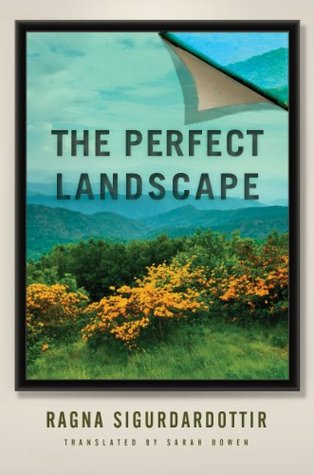 After reading several perplexing Icelandic novels in a row, it was a breath of fresh air to read a straightforward, plot-driven narrative. Whew! Icelanders still tell stories after all. Fun stories about creativity and mystery; intrigue in the fine art world.
After reading several perplexing Icelandic novels in a row, it was a breath of fresh air to read a straightforward, plot-driven narrative. Whew! Icelanders still tell stories after all. Fun stories about creativity and mystery; intrigue in the fine art world.
Novels about art forgery are hot right now. But as usual, Icelanders are ahead of the curve. Ragna Sigurdardottir’s novel, The Perfect Landscape, was published in Icelandic in 2009 and caught the current wave of popularity with an Amazon Crossing English publication with translation by Sarah Bowen in 2012. Ragna is also an artist, and her background in the fine arts world is put to good use in the novel.
In The Perfect Landscape, protagonist Hanna has returned to Reykjavik after nearly 20 years abroad to assume a temporary position at the avant-garde Annexe to a fictionalized Reyjavik Art Museum. The tiny museum turns out to be a hotbed of hidden loyalties and ulterior motives. Hanna lands on Team Steinn, joining with the conservator who suspects the museum’s two most important pieces are forgeries.
Realistic Fiction
When the next Icelandic novel I read also made an oblique reference to forged art, I checked online, and there was in fact such a scandal in the years before The Perfect Landscape came out. A few years previously, a scandal involving what may have been a professional ring of forgers had rocked the Reykjavik art world, but lawsuits had come to nothing. The guilty parties – and the forged art – were still at large. To an Icelandic audience, Ragna’s story is more than just possible, it is likely.
So Hanna must solve a mystery that everyone else would rather ignore, all the while mounting a new exhibition, watching her back in gladiatorial office politics, dealing with her crumbling long-distance marriage, and resisting her attraction to her only ally, the happily married Steinn. It’s a quick, fun read with Icelandic Art History 101 subtly folded in between the pages of intrigue.
Drafty Technique
The first and most often repeated truism of writing is “Show, don’t tell.” The weirdest of the weird Icelandic novels I’ve been reading didn’t break this rule. But Ragna mostly tells; in the middle of an action scene (not to imply that this is a rooftop-chase type of book), the action is broken up by description. I was surprised how little it bothered me, but I wondered how much more engaging it might have been if she had allowed the book to be longer and given the reader more opportunities to discover some of this backstory for themselves.
In a few places, the book felt a bit drafty. As in unfinished. For example, Ragna drops many clues right at the beginning that let the reader know Hanna is a fencer, but a few pages later she baldly states that Hanna gets her exercise from fencing. If feels as this is a note to herself that she has forgotten to remove. Also, if fencing is so important to her that it provides the metaphors for her emotional state throughout the book, it would be nice to actually see her fencing at least once. Shouldn’t someone at her salle drop a juicy clue after practice?
In another example, Hanna thinks
Steinn is right; information of this sort is not handed out on a plate.
…in two different chapters.
Messy Endings
What Ragna gets unequivocably right is the messy ending. All along the book seems to be pointing toward a rom-com perfect ending. But when Hanna stands up for the truth, all she gets for her trouble is the truth. She doesn’t even get all of the truth. At the end she has as many questions as she began with – just not the same ones.
Even more delightfully, in a Usual Suspects sort of way, Ragna gives the readers the answers. She shows us how the various peripheral characters actually relate to the central unsolved mystery. We know more about what they are going to do next than we know what Hanna will do. It gives the reader the satisfaction of a genre novel without sacrificing the complicated literary ending.
National Character
It tempting to look for some kind of explanation of national character in foreign books, and I feel like Icelandic authors are always willing to participate in that effort. Ragna fits this easily into her story by writing from the point of view of a returning expat. Hanna is always being reminded about how Icelanders do things. But she also gives more subtle ideas about Icelandic values in her characterizations of the ambitious young single mother; the businessman who would never cheat on his wife but is not above passing on a forgery; representatives of different generations of Iceland’s artistic history.
If nothing else, The Perfect Landscape is the perfect reminder that every visitor to Iceland should visit the Reykjavik Art Museum. Icelanders may be a literary people, but they have made a few impressive contributions to fine arts as well.





About the author